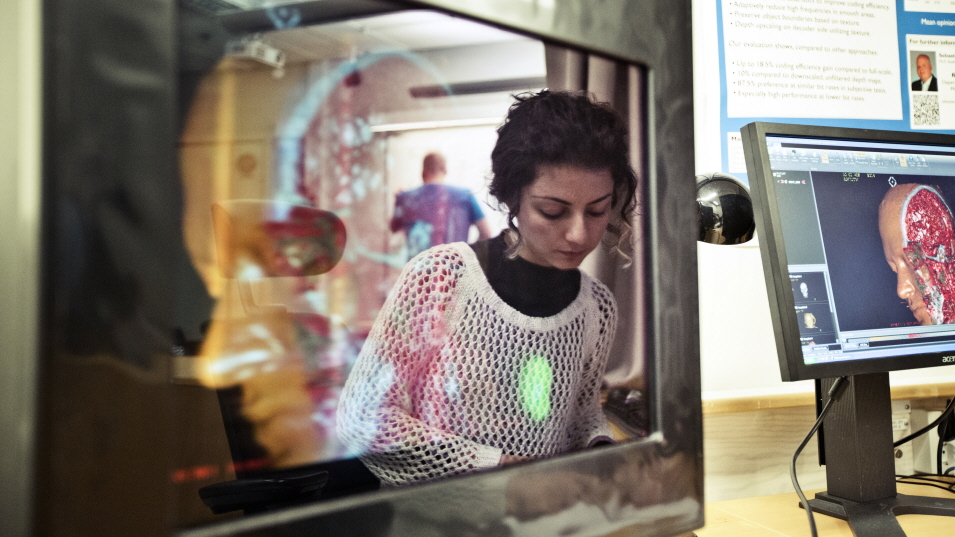Medi3D - A “Holographic” Display Test bed for Visualization of Digital 3D Data from Medical Applications
Recent years have seen rapid technological development within diagnostic imaging and other medical applications using visual information. Standard medical imaging technologies such as CT, MR and 3D ultrasound all generate 3D volume data sets.
Over the last years there has been a rapid development on improved presentations on high resolution 2D screens. By using these methods, radiology departments can handle more patients with the same staff; improve diagnosis, patient safety and quality of care.
Current display technology is a limiting factor when it comes to intuitive interpretation of medical scans. This is because data with inherent depth is being presented on displays that fail to reproduce all aspects of this depth. The limitation can be overcome by introducing 3D display technology.
Despite the presently used stereoscopic displays, which require head gear for operation, there are now other emerging technologies for 3D displays. These autostereoscopic 3D displays allow for full depth perception without any user worn head gear. Instead the complexity of forming the 3D image is located to the display itself so that not only a stereoscopic vision is obtained, but also a motion parallax, which further allows look-around capabilities.
The market for medical 3D displays could reach SEK 1 billion within a few years. There is also scope for a similar market within oil&gas and CAD applications. 3D displays have already entered the market of digital signs. Further ahead gaming is likely to give 3D displays an inroad to the $75 billion total display market. The project’s results – technology and know-how of a 3D display, its optimization and algorithms for rendering – will end up in patents taking a share of these markets and will bring Swedish 3D display technology and related research topics to a leading position.
The overall objective of this interdisciplinary project is to create a demonstrator visualization solution including a 3D display for clinical application. The solution will provide improvements in terms of increased efficiency and/or quality of care. The demonstrator will also serve as a state of the art test bed for 3D display related research. The project aims to have a customer driven approach by focusing development around a selected clinical application. There are four levels of activities: (i) Developing the clinical application. (ii) 3D display image quality modelling and optimization. (iii) Graphics processing for multi-view rendering. And (iv) Adaptation of core 3D display technology.
Ultimately the purpose of the project is to improve the health care provided to patients. In order to do so one must first understand how a 3D display will change and improve the way physicians work. That in turn requires building knowledge on what is required for optimizing 3D visualization in everything from image rendering methods, graphical processing hardware, image data transfer, and the 3D display itself.



